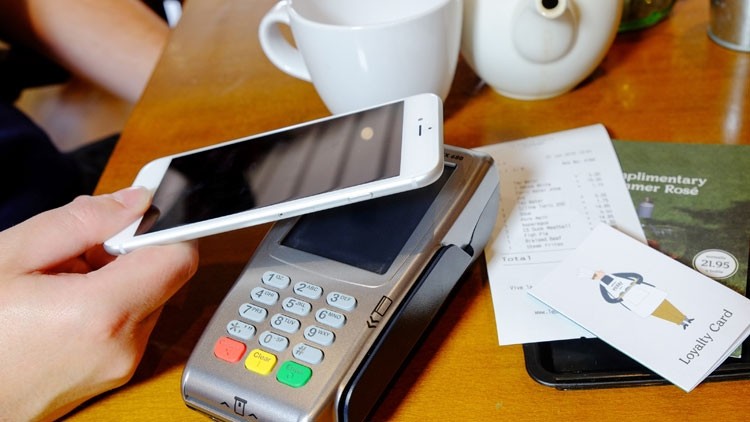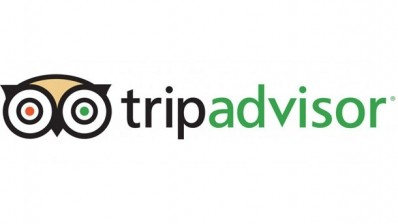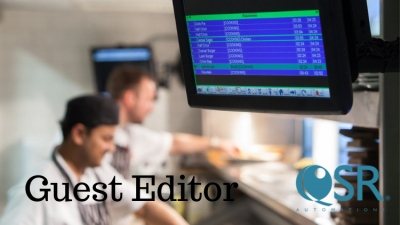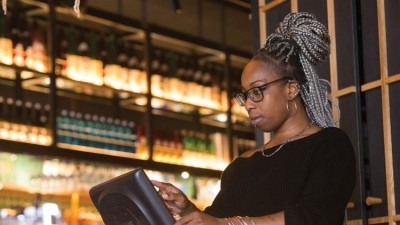Loyalty card: how technology can help up your customer marketing game

In today’s fiercely competitive restaurant sector, keeping your customers returning for more can mean the difference between your business sinking or swimming. Achieving that repeat customer ideal is no easy task, but those that embrace the power of technology will have an easier time of it.
Choosing an EPoS system that has inbuilt loyalty and customer relationship management (CRM) solutions, and that integrates with third-party apps, is critical for restaurants that want to reach out to their customers and entice them back again and again.
“There are a number of outstanding brands in the UK restaurant industry all vying for the attention of customers,” says Carlo Platia, chief executive officer at tech company Feed It Back. “Consumer spending across the sector has remained relatively flat over the past five years, but what has changed is an increase in the number, and quality, of brands. “In this environment it’s vital that businesses are pulling all the levers available to improve loyalty and give fickle guests a reason to come back through the door.”
Intelligent systems
As a start point, investing in an intelligent EPoS system will provide a wealth of customer data that restaurants can harness for targeted marketing campaigns.
For example, Zonal offers a web-based platform called Loyalty that enables operators to create, run and measure bespoke loyalty programmes that can recognise and reward their most loyal customers.
In addition, Zonal’s Campaigns Plus allows operators to send targeted SMS, email and marketing campaigns.
“Although Campaigns Plus can sit separately from Zonal EPoS, both applications come into their own when they are integrated with Zonal’s end-to-end solution, which has the Single Customer View (CRM) at its heart,” says Zonal commercial director David Charlton. “With integrated technology, a single customer’s data can be gathered and held to create a unique story that starts from the moment they book online, sign into the venue’s wifi, record what they order and how much they spend, whether they are signed up to loyalty or not, whether they are using an offer or giving feedback.
“This data is a powerhouse for operators and allows them to connect with individuals on a more meaningful level by devising personalised offers and notifications that are more likely to encourage repeat visits and spend.”
Detailed transparency
Similarly, Tevalis offers a CRM module that enables operators to manage all customer activity through one area, including the set-up and management of promotions, managing user accounts and analysing spending behaviours based on live information from the EPoS system.
“Our Customer Loyalty module offers detailed transparency into visitors’ spending and visiting habits that businesses can really use to their advantage in their tailored marketing campaigns,” says Tevalis sales director James Humble.
And Oracle says its CRM platform – Oracle Hospitality Simphony Cloud – enables operators to quickly implement a strategy appropriate for their customers.
“A combination of the platform and its Open API, which can connect to best-of-breed applications and solutions, allows operators to analyse all data to help build an understanding of customers, their needs and how best those can be serviced,” says Oracle food and beverage director of sales Mark Atkins.
“Oracle Food and Beverage’s Simphony platform helps them augment the customer experience by understanding what guests are ordering and what times they’re coming to specific restaurants. Ultimately, this allows operators to use this information to ensure customer offers are as tailored and personalised as possible, even on a location-specific basis.”
Making it personal
Research shows there’s still a place for instant offers when signing up new loyalty club members, with 79% of those surveyed in Zonal’s latest GO Technology report favouring this approach.
However, after that you need to build a genuine relationship through personalised campaigns: 72% of consumers surveyed said they expected companies to understand their unique needs and expectations, while 66% said they’d probably switch brands if they felt they were not being treated as an individual.
“Therefore, operators need to make sure they send monthly, relevant communications to their loyalty database with something unique that other people cannot get. This can also be a compelling reason to join the scheme in the first place that isn’t based on discounts but a value-added proposition for joining, which helps harvest genuine, more meaningful loyalty,” says Charlton.
“For example, offering customers access to exclusive peak-time availability if you’re a high-demand venue, or access to an exclusive event where you get to sample the new menu ahead of its launch.”
Getting a loyal following
Certainly, consumers do enjoy being part of a loyalty scheme: according to a 2018 YouGov survey, three-quarters (77%) of the population are members of a loyalty programme, with seven in 10 (72%) Brits believing they are a good way to reward customers.
But the report also showed that despite their popularity, the space is dominated by supermarkets (with 65% of the population subscribing to one of their programmes), followed by pharmacies at 37%, and physical and online retailers at 30%. Restaurants, by contrast, only had a 25% uptake.
“There is an obvious disconnect between customer inclination to join a loyalty scheme and the number of restaurants taking competitive advantage, despite practical and easy-to-use tools being available,” says Rob Clarke, business development manager at Access Hospitality.
Access’ cloud-based sales and marketing loyalty solution operates as either a standalone offering or as a platform to host third-party loyalty applications and programmes. And Clarke believes the very fact that a restaurant’s own technology can integrate with the most widely used apps encourages loyalty in itself.
“Integration with popular apps is a major factor in encouraging loyalty, with Access partnering the biggest names in the hospitality industry including Pepper, Access Collins and 5 Loyalty. The online loyalty module also integrates and interfaces seamlessly with all the major chip ’n’ pin, contactless, Apple Pay and Android Pay apps, as well as loyalty, order ahead and table reservation solutions,” he says.
With social media playing such a huge part in people’s lives now, interacting with customers – and potential customers – through social media channels is another must for fostering
Online reputation management company Reputation.com offers technology solutions that enable restaurant operators to view feedback and comments left on sites all over the internet, whether on social media, Google, Bing, TripAdvisor or elsewhere.
“Our solutions provide the necessary technology to view all feedback and comments in one place and, of course, to respond to it. Thanks to the AI of our platform, operators can then improve their operations to increase guest experience and loyalty,” says Reputation.com managing director Anthony Gaskell.
“The best way to encourage loyalty is to build a community, respond to customer queries, comments and complaints and just make sure that you’re in the minds of people when they’re looking to go out for a meal, and that you rank highly online when people are searching for their next night out – this is the best way to encourage repeat visits.
“Loyal guests are following their favourite restaurants on social media, so it goes without saying that a good social presence in the local community is essential to keep relationships with customers flourishing.”
Follow rules of engagement
Feed It Back’s platform also gathers data from bespoke feedback surveys, online review platforms such as TripAdvisor and Google, and social media pages such as Instagram and Facebook, putting them into one easily navigable dashboard that allows operators to quickly and easily respond to comments and spot trends.
The platform’s attributing function gives operators the ability to respond to guests who’ve had a bad experience, as well as recognising those people who have had a positive experience.
“We have a module called Satisfeed that allows operators to see when they have successfully recovered a customer and driven loyalty,” says Feed it Back’s Platia.
“Many of our clients devolve responsibility for responding to guests to each respective site: head office can then take a bird’s eye view of all feedback across the estate and identify which techniques are working and share them with the wider group.
“This isn’t just about recovering people who’ve had a bad experience, it’s also about seeking out those who’ve had a positive one and engaging them in conversation.
“A simple surprise and delight tactic, offering them an incentive to visit again, works well, but so does engaging in conversation with the customer and thanking them for their visit.”
GDPR – what is it and what are the rules?
In May last year, the EU’s new General Data Protection Regulation (GDPR) came into force to protect consumers’ privacy and personal data. The law means restaurant operators need to make sure that anyone parting with personal data is fully and clearly informed of privacy and consent statements.
“There was a lot of misinformation in the build-up to the GDPR’s implementation last year, but really it just made what businesses had already been doing and seen as ‘best practice’ law,” says Reputation. com managing director Anthony Gaskell.
“Things like database security, respecting email opt-in/opt-out preferences, not selling/losing any customer data etc, are the easiest ways to stay compliant. We always advise our customers to be transparent and use plain language in their small print when it comes to privacy policy and opt-in messages.”
“There is no doubt that many operators initially lost a vast amount of personal data post-GDPR, but I think it’s fair to say their databases today are far more valuable as they have genuine fans who wish to engage with their brand or venue,” says Zonal commercial director David Charlton.
“My top tip for operators who share customer data with their tech partner, so they can also use it for their own gains, is to ensure they are providing you from the outset with the tools required to protect your business from any risk of data breach.”
To discount or not to discount?
A few years back, discounting was a big deal in the casual dining sector – but does it make good business sense?
“The days of mass discounting are over. The use of overt deals, such as discounting for all, have the potential to threaten brands and profit margins, doing little for building customer loyalty and the bottom line,” says Zonal’s David Charlton.
“We know that a scattergun approach just doesn’t work – it doesn’t resonate with customers and may also mean that you are simply cannibalising your own income. Instead, operators need to consider building personalised deals and discount schemes that surprise and delight and keep existing customers coming back for more.”
Tevalis sales director James Humble believes discounting does have a place but says it should be used “in moderation” by certain types of restaurant operations.
“Discounting can really provide benefits in terms of helping to drive quick sales, attracting new customers and even help build that relationship with already loyal customers,” he says.
“However, it can also shift the focus onto price which, while benefiting many QSR and casual dining restaurants that experience high volumes of covers throughout the day, can attract the wrong attention too, such as customers who are solely driven by price, rather than what the business has to o fer. That works for certain types of operations, but one size does not fit all.”
This is a web version of an article that first appeared in the April issue of Restaurant magazine, the leading title for the UK's restaurant industry. For more features, comment, interviews and in-depth analysis of the restaurant sector subscribe to Restaurant magazine here.





























